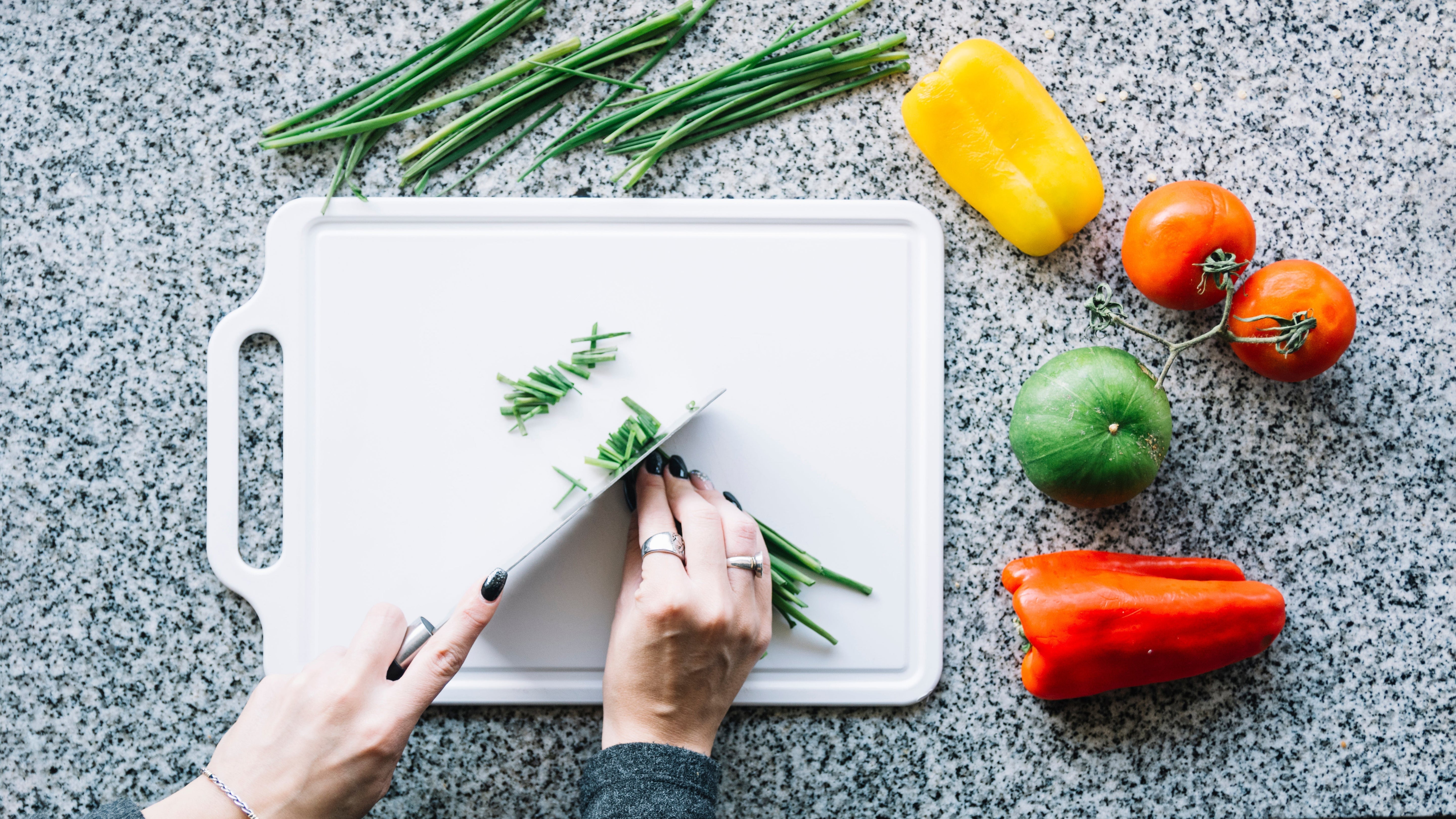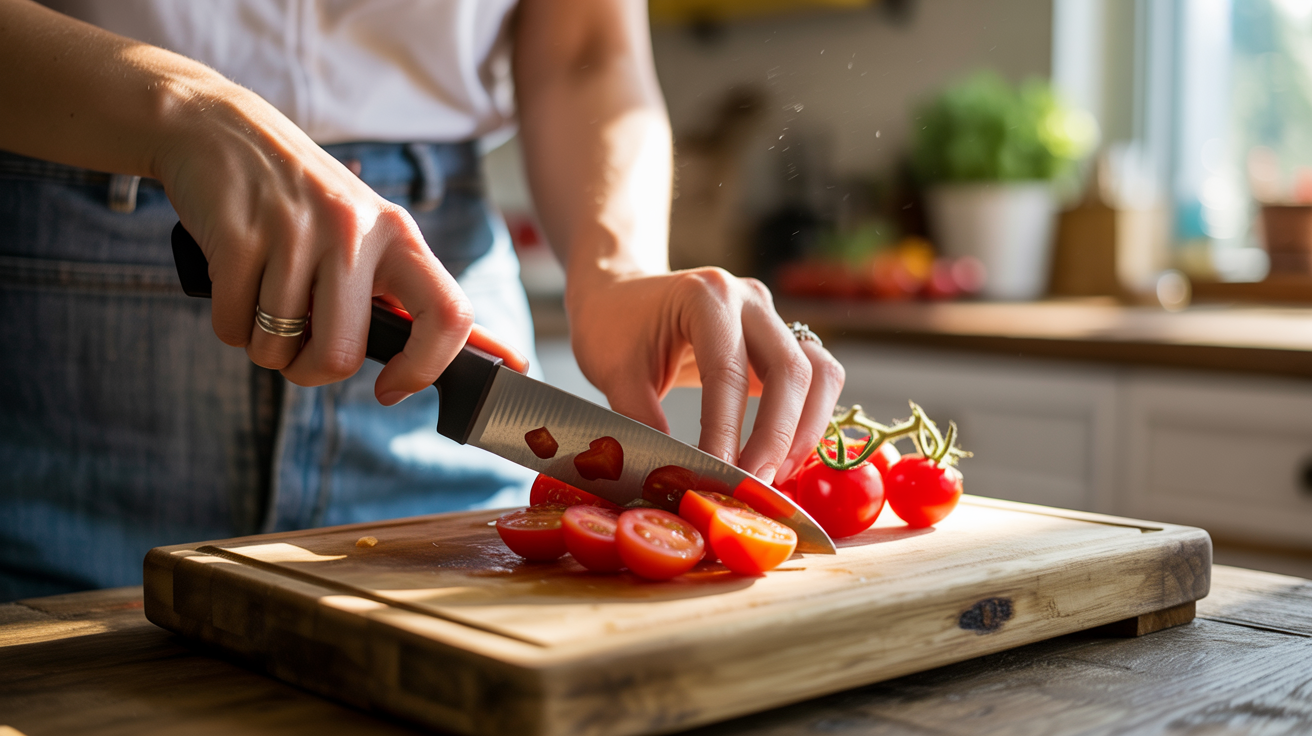
Are Plastic Cutting Boards Safe? A Closer Look at Cutting Board Materials and Your Health
Key Takeaways
- Plastic cutting boards can harbor bacteria and shed microplastics over time, especially as they wear out.
- Wood boards—especially walnut, maple, and cherry—are the safest and healthiest option for food prep.
- “Non-toxic” means free from synthetic sealants, adhesives, and harmful chemical treatments.
- A well-maintained hardwood cutting board is a long-term investment in your health, sustainability, and kitchen aesthetics.
- Choosing the safest cutting board material supports both hygiene and intentional living.
Introduction
At first glance, a cutting board might seem like a utilitarian kitchen tool—nothing more than a flat surface to chop, dice, and slice. But the material you choose has a ripple effect. It impacts food safety, knife longevity, hygiene, and even your exposure to toxins. In today’s wellness-conscious kitchens, the question isn't just about looks or durability. It's about health.
So, are plastic cutting boards really safe? Or are there better, healthier alternatives?
This article takes a close look at different materials, dispels myths around plastic safety, and helps you make an informed decision about the surface you prep your food on daily.
Why Cutting Board Material Matters
Not all cutting boards are created equal. The material you choose directly affects:
- Hygiene: Some materials trap bacteria more easily than others.
- Knife care: Hard or uneven surfaces can dull your blades prematurely.
- Durability: How long your board lasts—and how it ages—depends on its core material.
- Aesthetic value: A beautiful board lives on your countertop as both a tool and design piece.
- Safety: Some boards leach chemicals or shed harmful particles with daily use.
The best cutting boards strike a balance between these factors. And increasingly, plastic is struggling to keep up.
Are Plastic Cutting Boards Safe?
Plastic cutting boards have long been favored for their low cost and dishwasher-safe convenience. But research and real-world use have raised several concerns:
1. Microplastic Shedding
Every time a knife strikes the plastic surface, tiny particles can break off—especially as the board develops deep grooves. These microplastics can stick to food, especially moist or fatty items, and be unknowingly consumed.
2. Bacterial Buildup
Plastic boards are often advertised as easier to sanitize, but their knife grooves are harder to clean thoroughly. Studies have shown that bacteria can survive in these grooves, even after dishwashing.
3. Chemical Leaching
Some plastic boards—especially brightly colored or inexpensive ones—contain additives like BPA or phthalates. Over time, and with exposure to acidic foods or heat, these chemicals may leach into your food.
In short, while plastic cutting boards can be safe in the short term, they degrade quickly and pose long-term risks to both your health and the environment.
Comparing the Safest Cutting Board Materials
To help you weigh your options, here’s a breakdown of the most common materials:
|
Material |
Safety |
Knife-Friendly |
Hygiene |
Sustainability |
Verdict |
|
Hardwood (Walnut, Maple, Cherry) |
Excellent |
Excellent |
Very Good |
Excellent |
Best choice |
|
Bamboo |
Moderate |
Poor |
Good |
Good |
Acceptable |
|
Plastic |
Low |
Fair |
Poor (grooves trap bacteria) |
Poor |
Least safe |
|
Glass |
Poor (can shatter) |
Terrible (dulls knives fast) |
Fair |
Poor |
Not recommended |
Hardwood emerges as the safest and most balanced material across categories. It’s the ideal blend of performance, hygiene, and beauty.
What Makes a Cutting Board Non-Toxic?
The term "non-toxic" is often used in marketing—but in the context of cutting boards, it should mean:
-
Food-safe finish: No polyurethane, lacquer, or synthetic sealants. Instead, boards should be treated with food-grade mineral oil or beeswax.
-
Solid hardwood construction: No MDF, plywood, or laminated fillers that may contain glue and resins.
-
No added dyes or plastic components: Particularly in handles or decorative inlays.
-
Made from naturally antimicrobial woods like maple and walnut.
If a cutting board doesn't clearly list its finish or materials, it's best to steer clear.
Why Hardwood Boards Are the Healthiest Cutting Boards
Wood has been used in kitchens for centuries—and for good reason. When sourced and treated correctly, hardwood cutting boards are among the healthiest tools you can have in your kitchen.
-
Naturally Antimicrobial
Unlike plastic, wood fibers can trap and kill bacteria below the surface, preventing it from recontaminating food.
-
Kind to Knives
Walnut and maple are soft enough to protect blade edges but hard enough to resist deep gouges.
-
Minimal Moisture Retention
Properly finished boards don’t soak in water, reducing mold and bacteria risks.
-
Beautiful and Sustainable
Wooden boards add visual warmth and last years with proper care, making them a design-forward, eco-conscious choice.
Best Non-Toxic Cutting Board Options You Can Trust
Here are three hardwood options to consider when choosing the best non-toxic cutting board for your kitchen:
Walnut Cutting Board
Rich, dark grain with elegant contrast. Soft enough for knife preservation, but sturdy enough for daily use. Ideal for both prep and presentation.
Maple Cutting Board
A classic choice with tight grain and light color. Durable, easy to clean, and perfect for everyday chopping, slicing, or bread work.
Cherry Cutting Board
Warm, reddish tone that develops a deeper patina with time. Slightly softer than maple, great for fruit and cheese boards.
Boards from Refined Surroundings are made from solid hardwood, finished with food-safe oils, and crafted to enhance both utility and aesthetics.
How to Care for Your Cutting Board the Healthy Way
Even the safest cutting board needs regular care. Here's how to keep yours in great shape:
- Clean after every use with warm water and mild soap.
- Dry immediately to avoid warping or moisture damage.
- Oil every 2–4 weeks with food-grade mineral oil or board cream.
- Disinfect naturally with a lemon and salt scrub once a month.
-
Never soak or put in the dishwasher, as this can cause cracking or splitting.
Proper care not only extends your board’s life but ensures it remains hygienic and food-safe.
(Need a full routine? See our guide: How to Clean and Maintain Wooden Cutting Boards.)
What Kind of Cutting Board Is Best—for You?
Choosing the right board depends on your lifestyle, cooking habits, and personal values.
-
For everyday cooking: Maple is a great all-rounder—durable, light, and easy to clean.
-
For design lovers: Walnut offers rich character and works beautifully on open shelving or kitchen islands.
-
For small kitchens: Cherry boards with handles or compact dimensions are stylish space-savers.
-
For sustainability-minded cooks: Choose responsibly sourced wood with minimal packaging and natural oils.
-
For gifting or entertaining: Custom engraved boards or large charcuterie-style pieces make lasting impressions.
The best cutting board is one that supports your health, your workflow, and your kitchen aesthetic—all at once.
Final Thoughts: Investing in a Healthier Kitchen
Cutting boards are often seen as accessories—but they’re one of the most essential, frequently used tools in the kitchen. And the board you choose speaks volumes. Are you choosing convenience over health? Or beauty without function?
Plastic may offer short-term ease, but hardwood boards offer long-term wellness, sustainability, and style. They're better for your knives, safer for your food, and far more pleasing to keep on your counter.
When you invest in a non-toxic, hardwood cutting board, you’re not just buying a kitchen tool—you’re making a commitment to intentional living.
Explore Safer, Smarter Cutting Boards
Looking to make a smarter choice for your kitchen?
Shop handcrafted walnut, maple, and cherry cutting boards. Thoughtfully made. Naturally safe. Built to last.
Frequently Asked Questions
Q: Are plastic cutting boards safe to use every day?
A: While plastic boards are affordable and dishwasher-friendly, they can become unsafe over time. Deep knife grooves can harbor bacteria, and many boards shed microplastics as they wear. For long-term health and hygiene, plastic cutting boards are not considered the safest cutting board material.
Q: What kind of cutting board is best for health and durability?
A: The best cutting boards are made from solid hardwoods like walnut, maple, or cherry. These materials are naturally antimicrobial, gentle on knives, and long-lasting. When properly maintained, they’re the healthiest cutting boards for everyday use.
Q: How do I know if a cutting board is non-toxic?
A: Look for boards finished with food-grade mineral oil or beeswax. Avoid synthetic coatings, dyes, or adhesives. The best non toxic cutting board is made from solid wood with no chemical fillers or sealants.
Q: Why are wood cutting boards considered safer than plastic ones?
A: Hardwood cutting boards (like walnut and maple) naturally resist bacteria and don’t shed microplastics. They also age gracefully and won’t dull your knives. In contrast, plastic boards degrade over time and can retain bacteria in deep cuts, even after washing.
Q: Can I still use plastic cutting boards if I sanitize them?
A: You can, but it's not ideal long term. Even with regular sanitizing, plastic boards wear down quickly, creating crevices that trap bacteria and debris. For a safer, more sustainable solution, switch to hardwood options—the safest cutting board material with proper care.


Leave a comment
This site is protected by hCaptcha and the hCaptcha Privacy Policy and Terms of Service apply.